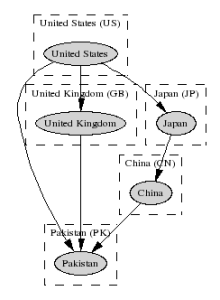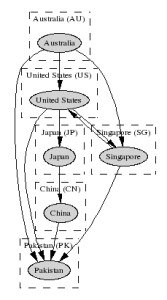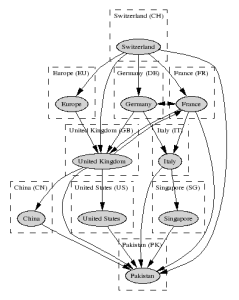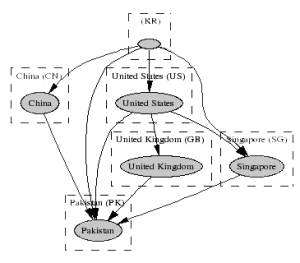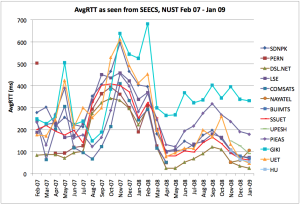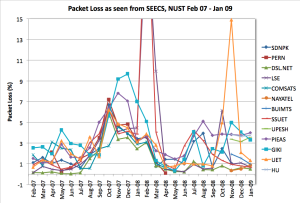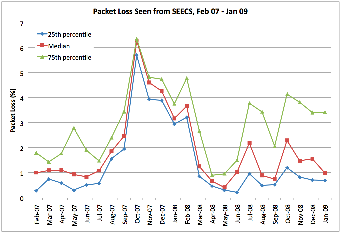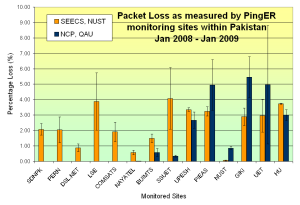1. Introduction
School of Electrical Engineering and Computer Sciences (SEECS) is a constituent college of National University of Sciences and Technology (NUST), Pakistan - SEECS was formerly known as NIIT (NUST Institute of Information Technology). Since SEECS has been an important collaborator with SLAC, CERN and Caltech, we prepared a case study presenting an overview of the issues faced by SEECS in particular and Pakistan in general.
Currently the PingER project maintains six (7) monitoring nodes in Pakistan, measuring the performance of sites listed in the table - monitored nodes - below. The measurements date back to 2003. Since then there has been a gradual increase in the number of monitoring nodes which helps in making reliable inferences. These monitoring sites are deployed in Islamabad at the following locations:
...
The data presented here has been collected from the monitoring sites mentioned above. A copy of the same can be obtained from here. We study and filter the results for anomalous observations and present the analysis below.
2. Routing
We first look at the International connectivity to the PingER monitored sites.
2.1. International Connectivity
Below are the routing results we compiled using (the Route Visualizer and) the monitoring sites in North America, Australia, Europe and East Asia. These results enable us to draw the following conclusions:
...
Figure 2 | Figure 3 | Figure 4 | Figure 5 |
|---|---|---|---|
| | | |
2.2. Routing within Pakistan
The routing results compiled using monitoring nodes within Pakistan showed that the traffic stayed within Pakistan. The Internet Exchange Points appear to be operating as expected. This is also confirmed by the Round Trip Times discussed below. Anomalies what so ever, were not observed. The fact that the IXPs are operating as expected is a pleasant observation as compared to the past (2004) when traffic originating within Pakistan and destined for a host inside Pakistan would exit the country and transit an international carrier before reaching its destination.
3. Performance Results
| Wiki Markup |
|---|
Data files: Set I \[[xls|^performance-PK-PK.xls]\], Set II: \[[xls|^performance-data-SLAC-PK-mac.xls]\] |
Here we discuss the performance metrics as measured by the PingER monitoring hosts.
3.1. Performance as seen from SLAC
The performance measurement results for Pakistan as gathered by the monitoring node at SLAC are summarized below.
...
| Figure 12 | Figure 13 |
|---|---|---|
GIKI | |
|
LSE | | |
NAYATEL | |
|
SEECS,NUST | | |
SSUET | | |
UPESH | | |
3.2. Performance within Pakistan as seen from SEECS-NUST and NCP-QAU
Figure 14 | Figure 15 | Figure 16 |
|---|---|---|
|
|
|
...
Figure 17 | Figure 18 | Figure 19 | Figure 20 |
|---|---|---|---|
| |
| |
Conclusion & Recommendations
The fundamental observation made from this case study is that though the national backbone is well provisioned, yet the institutions do not reflect the expected levels of performance. The primary reason for this is the high user to available bandwidth ratio. Also, the power shortage in Pakistan does not help with unreachability levels.
Annexure
The traceroute results below show the RTT progression implying that the national backbone is well provisioned.
...
